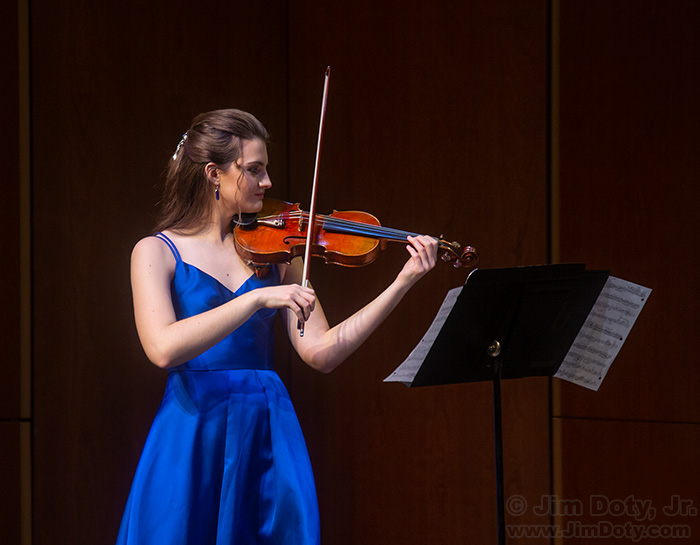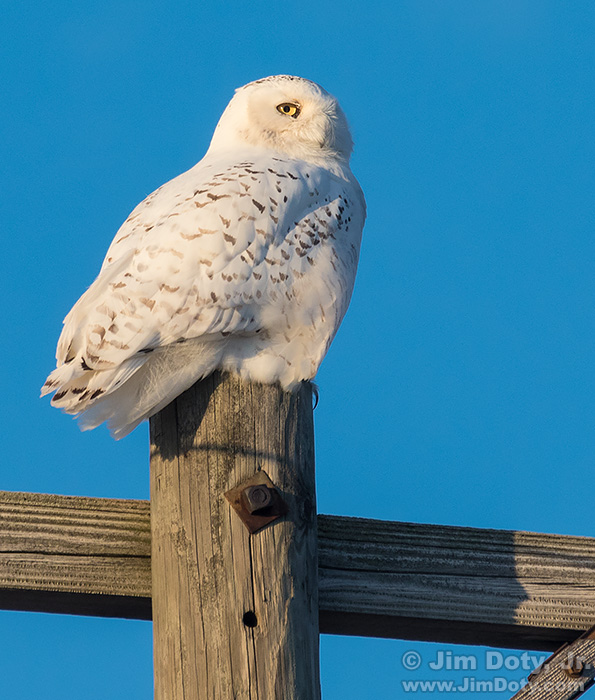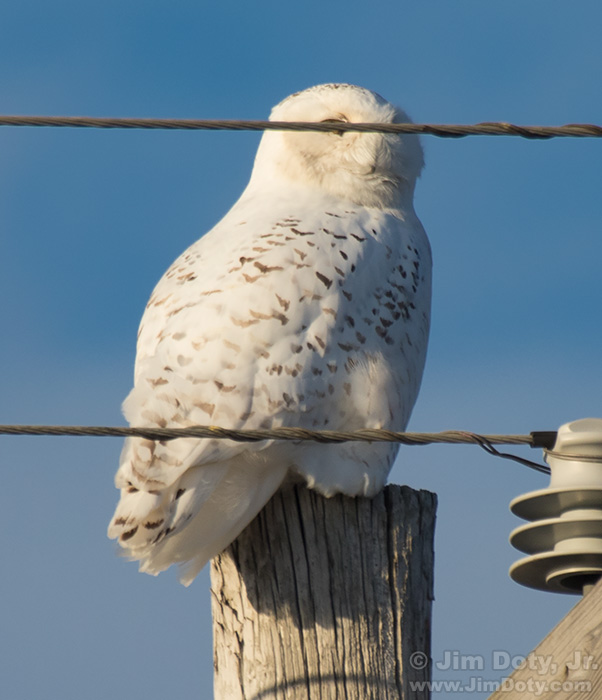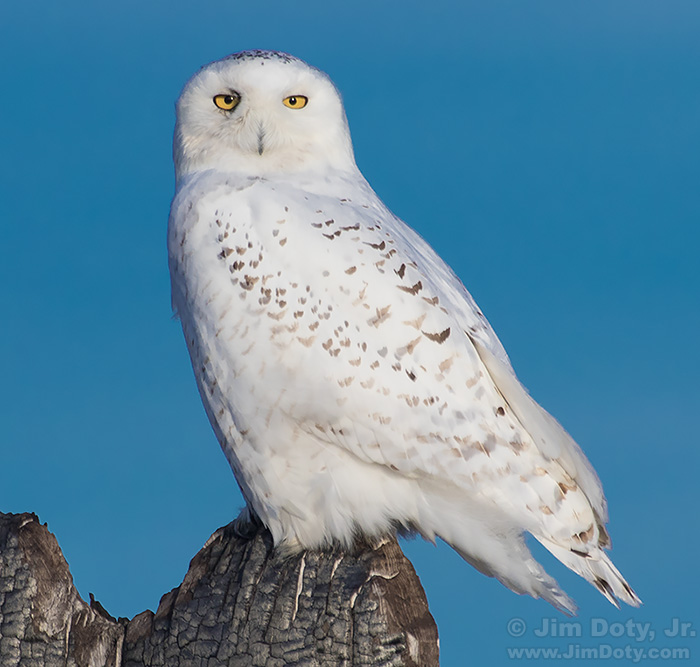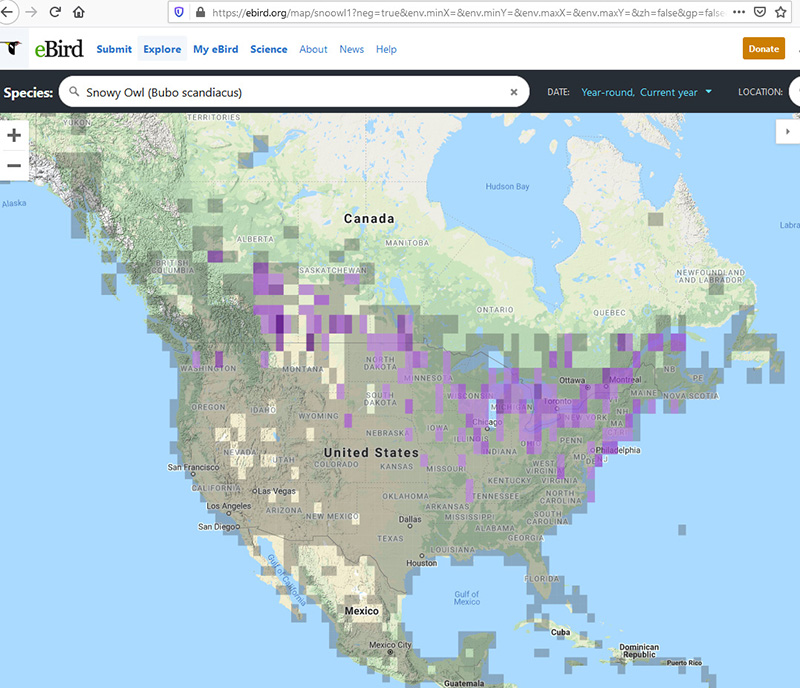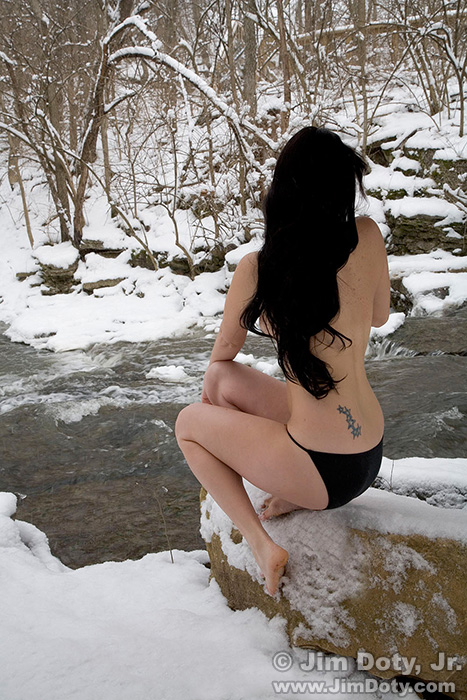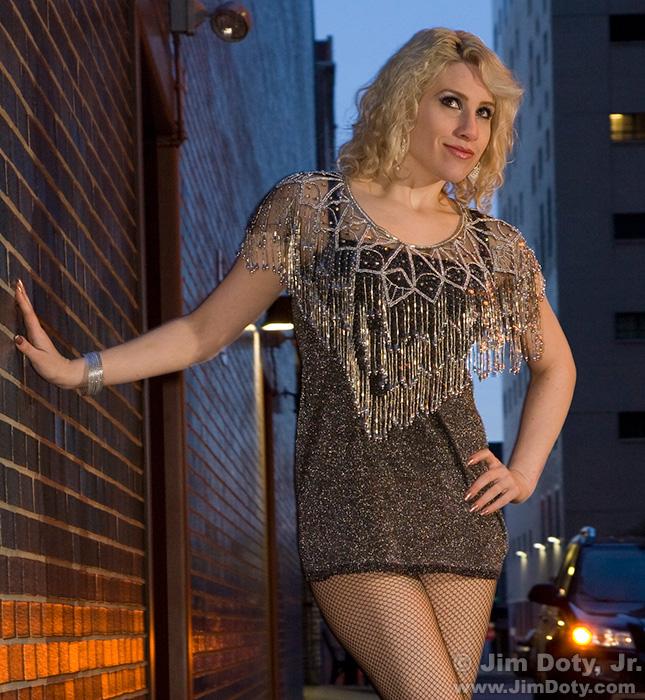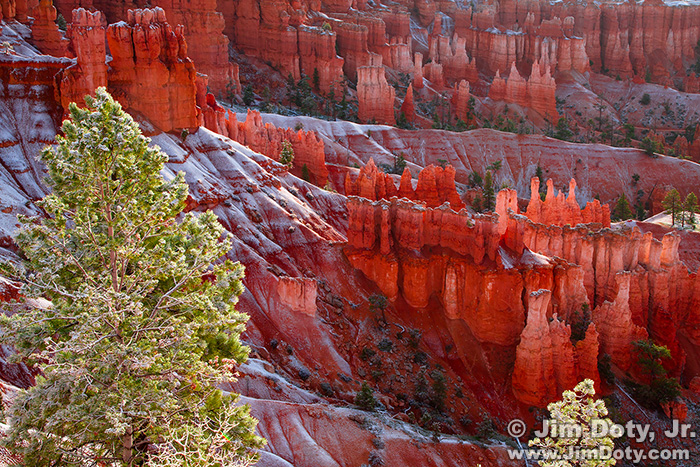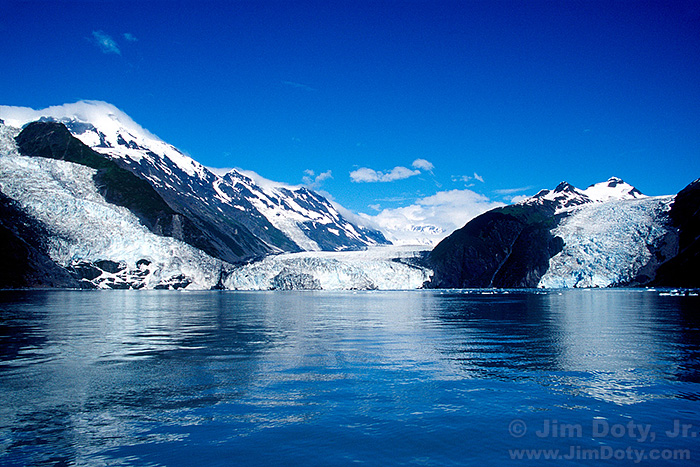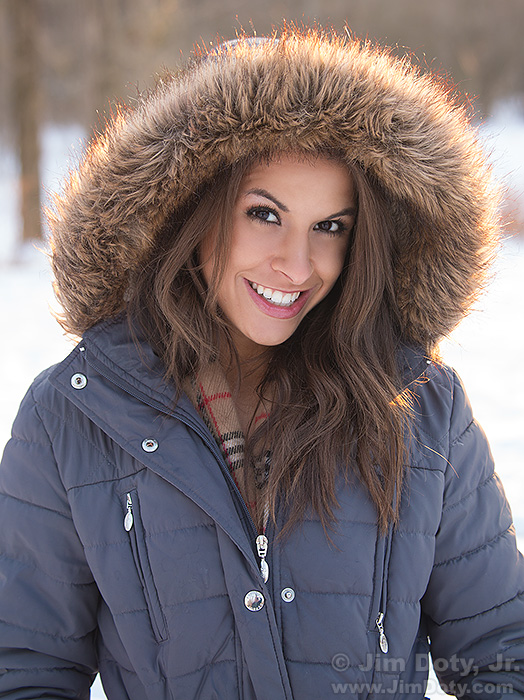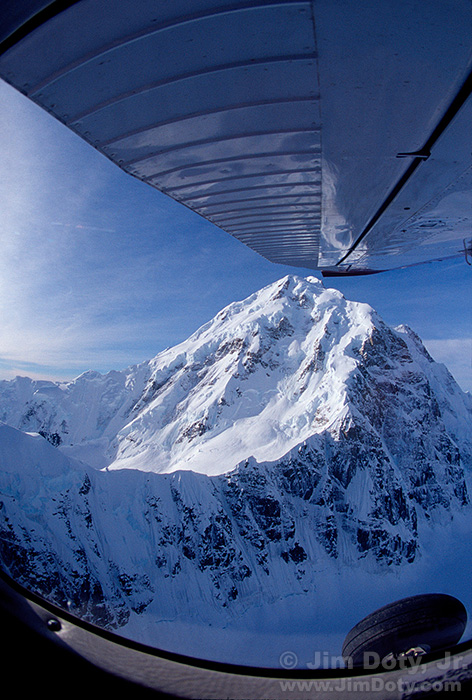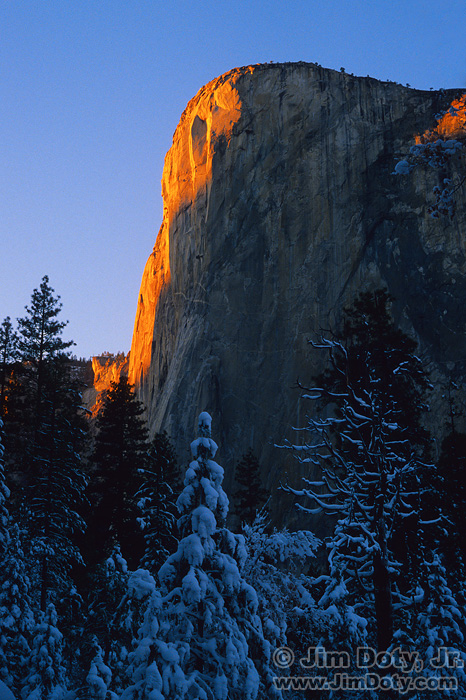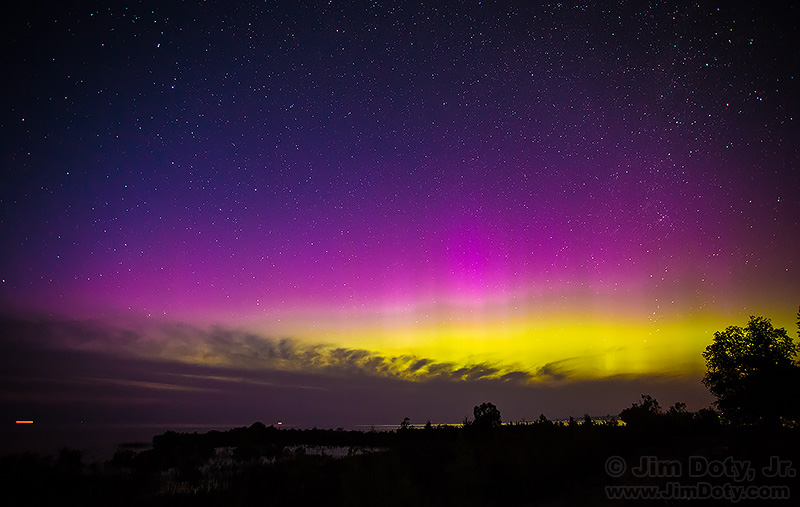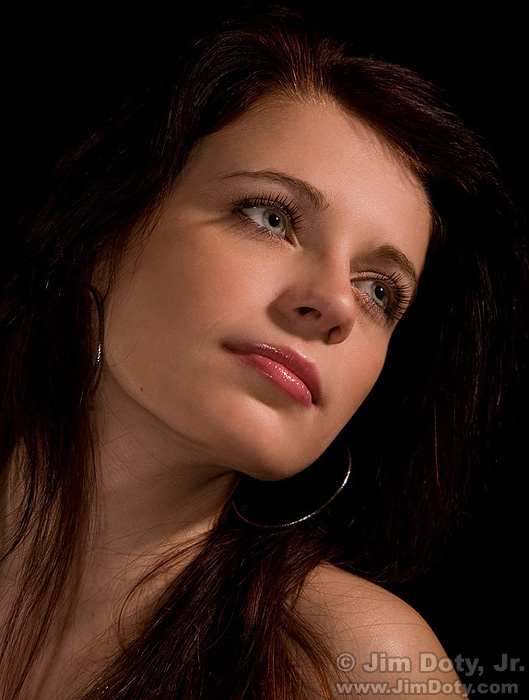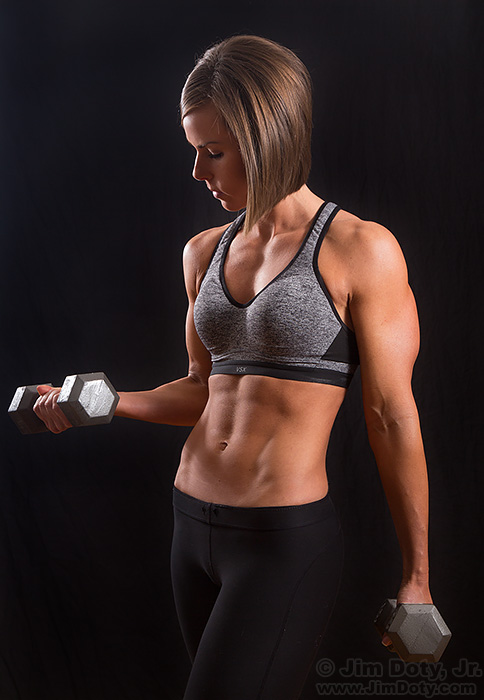The first thing to do is to ask permission ahead of time. Some places do not allow photography during the performance or they limit the number of photographers. In this case, Beth asked me to photograph her recital and I was the official photographer. One of the keys to photographing an event is not to become a serious distraction from the main event. That means not doing a lot of wandering around, and certainly not getting in front of people who are watching the event. Be as discreet as possible. If you need to move during a performance, if at all possible do it during the applause between numbers.
Category Archives: Using Equipment
Violinist in the Snow
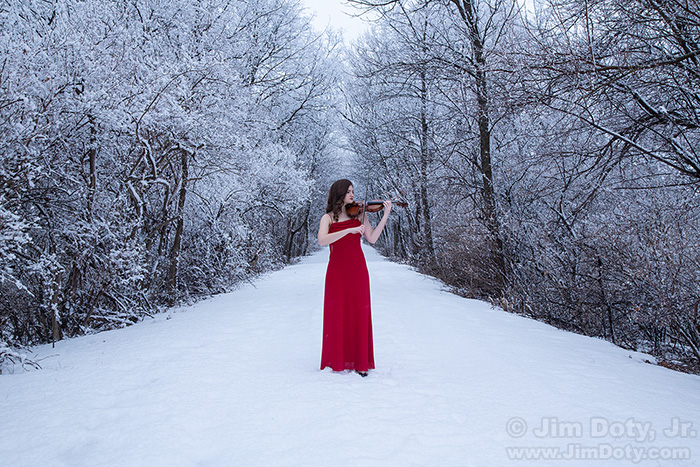
This is one of my all time favorite winter images. On a prior photo shoot, Beth and I went out into the cold and snow to create images. She played her violin while I took pictures. It was her first time shooting in the cold and snow and she was a real trooper. For that shoot she wore her long black concert dress. The snow melted not long after that, but we decide if another day came along with the right conditions we wanted to shoot in the now again.
Snow Covered Squirrel
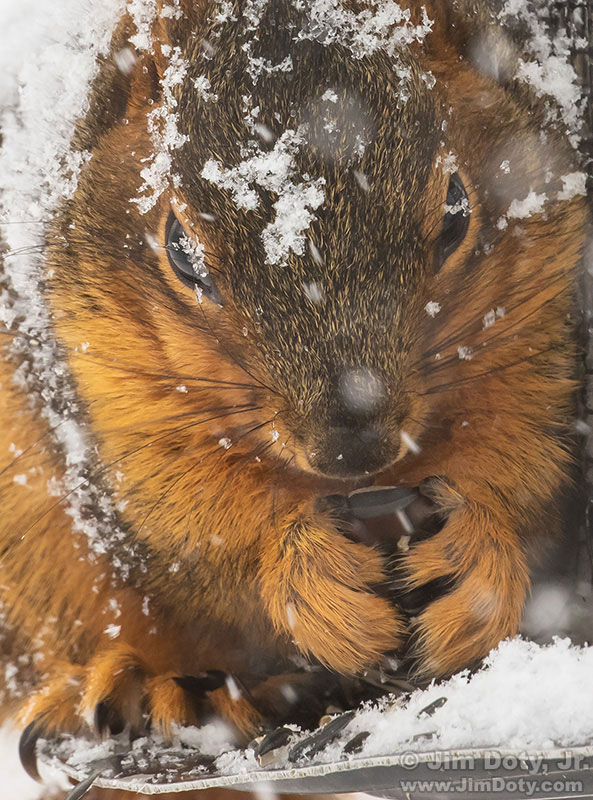
I looked out our kitchen window and spotted this squirrel chowing down at one of our bird feeders. I grabbed a camera and lens, slowly opened the kitchen window and created several images. This is one of my favorites. I especially like the snowflakes on the fur and little ice-like crystals in the whiskers and eyelashes.
How to Photograph a Musician in the Cold and Snow
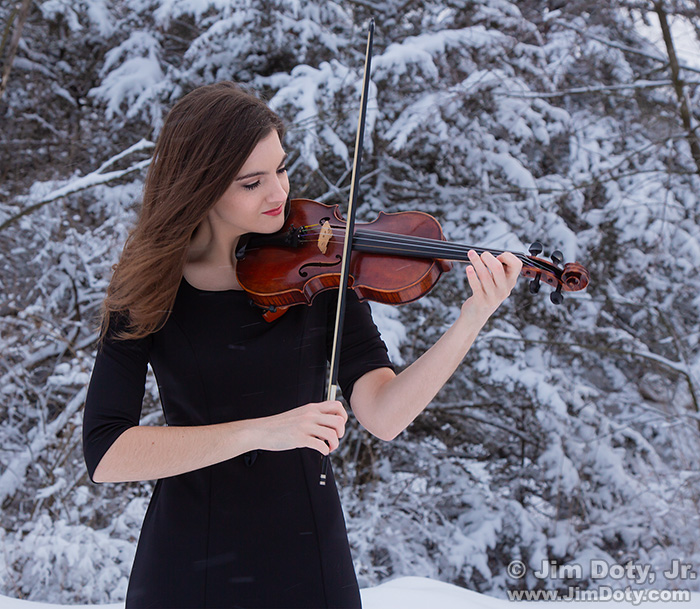
It was my happy privilege to do winter portraits of Beth Presler who is a superb violinist. This article has suggestions for photographing any musician on a cold, snowy winter day.
“How To†Series: Snowy Owl Photography
If there are cold enough temperatures and plenty of snow cover on the ground, the northern United States has a winter invasion of Snowy Owls. These are magnificent creatures and well worth your photographic time and attention. This series is filled with tips on how to find and photograph snowy owls.
Snowy Owl Photography: Solving A Photo Problem (And the Right Way to Exit Your Vehicle)
When I am traveling with my highly trained and high paid photographic assistant it is his job to remove trash barrels when they are in the way, cut down trees that spoil my view, run out into the meadow and scare off the cow elk that are in front of the bull elk I want to photograph, rip boards off of old barns that don’t look quite distressed enough, pull on the whiskers of a sleeping cougar to wake it up, and cut down utility lines that are obstructing a clear view of my subject. But he wasn’t with me on this trip due to sitting in jail over a minor incident in Yosemite. So I had a challenge on my hands that I had to solve myself.
I am kidding, of course. The prior paragraph was inspired by really crazy things a few photographers do but shouldn’t be doing.
A Snowy Owl Photo Expedition
What is a Snowy Owl expedition really like? This article is your chance to find out. Join me for a two day photo safari! I give you tips and photo suggestions along the way, and you get to see how I prepare, plan, and adapt on a photo trip. I tell you what went right and what went wrong so this is also about what to do when things don’t go according to plan.
How to Find and Photograph Snowy Owls
Winter is your opportunity to photograph Snowy Owls. When it is cold enough and there is enough snow cover, snowy owls move down into the northern U.S. The colder it is the farther south they move. If conditions are right, don’t delay. If the winter turns warmer the snowy owls will head back north.
Continue readingHow to Photograph a Nude Model in the Cold and Snow
It is difficult enough to create a beautiful nude image under normal circumstances, much less in the cold and snow. You need to bring some significant skills and experience to the task. So does your model.
How To Work With A Model (or Anybody Else) When The Windchill is 4°
You would think a windchill of 4° Fahrenheit (-16°C) would be too cold for a photo shoot, but not with some models. We booked this January shoot weeks in advance so we knew it would be cold, but we had no idea how cold until the day arrived. Here’s the story behind this image and how to work with a model (or anybody else) when it is so cold.
How to Protect Your Camera Gear in the Cold and Snow
Cold and snow can cause a lot of damage to your camera gear. Something as simple as shooting outside and taking your camera inside your house or car can cause hidden damage that won’t show up until days or weeks later. The simple steps in this article could save you hundreds of dollars in repair bills.
Testing Your Camera’s Snow Exposure Latitude
The “snow exposure latitude” for every camera is different. You won’t find it in your camera’s manual but it is easy to determine with a do-it-yourself test. Why does it matter? If you don’t know the snow exposure latitude for your camera and how to apply it to your images, the color and quality of your winter photos will suffer.
How to Find and Photograph Snowy Owls
Winter is your opportunity to photograph Snowy Owls. When it is cold enough and there is enough snow cover, snowy owls move down into the northern U.S. The colder it is the farther south they move. If conditions are right, don’t delay. If the winter turns warmer the snowy owls will head back north.
Continue readingMetering People in the Snow
The white snow in a winter scene can and often does fool a camera meter into underexposing a portrait, so here are the steps to take to get the right exposure. I throw in a few portrait suggestions too.
Metering Daytime Winter Scenes
Metering for scenes with a lot of snow can be tricky since the bright snow fools the camera meter. I see a lot of winter photos with gray snow, which means the camera meter did exactly what it was designed to do. The solution is quite simple provided you know what to do.
How To Series: Winter Photography
In addition to all of the usual photographic challenges, winter provides some extra complications, especially in terms of metering. So I began this series of articles on winter photography. Check out the links below. The articles will help you meet the unique challenges of winter photography. So get out there, have fun, and create some great winter images!
Tonight, December 21, is the Night: The Great Conjunction of Jupiter and Saturn
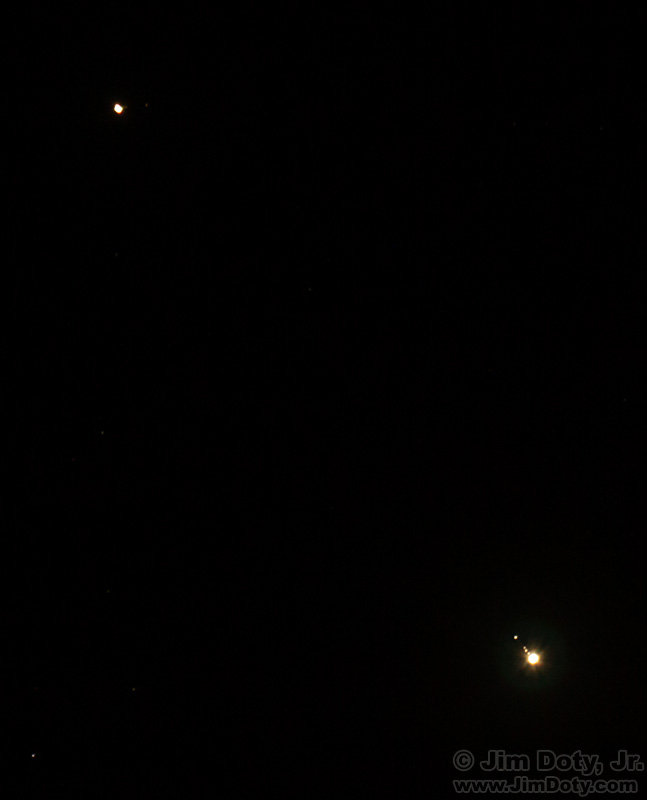
Tonight, December 21, is the “Great Conjunction” of Jupiter and Saturn. This is the closest they have been in 397 years. Look in the southwest sky at dusk. Jupiter/Saturn will be the brightest thing you see.
How to See and Photograph the Geminid Meteor Shower
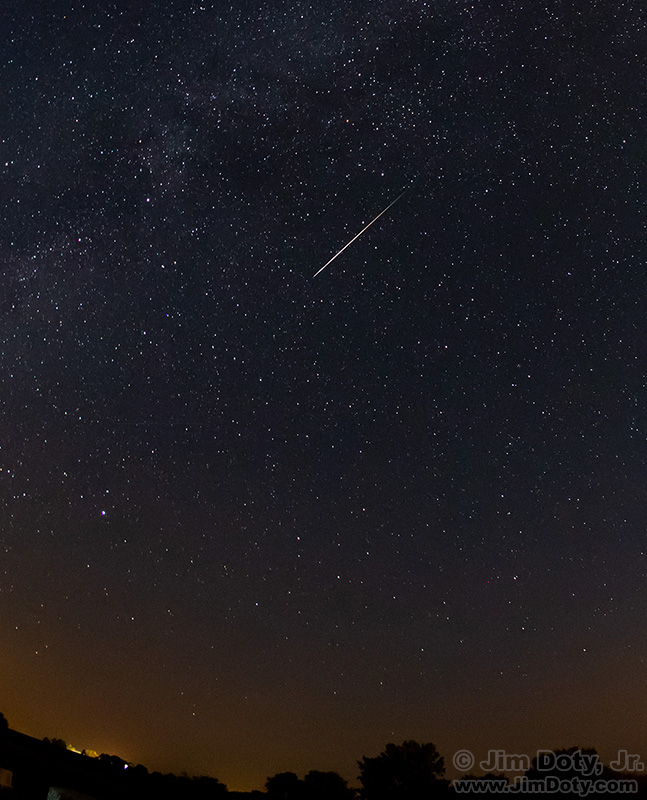
Perseid Meteor photographed from Rose Hill Cemetery west of Lamoni, Iowa. 4:55 am CDT, August 13, 2018. Cropped from the original image.
Tonight (Dec 13-14) is the night of the Geminid Meteor Shower. This article will tell you what you need to know to photograph what could be the best meteor shower of 2020.
How to Protect Your Camera Gear in the Cold and Snow
Cold and snow can cause a lot of damage to your camera gear. Something as simple as shooting outside and taking your camera inside your house or car can cause hidden damage that won’t show up until days or weeks later. The simple steps in this article could save you hundreds of dollars in repair bills.
How to See and Photograph the Northern Lights
As we head into fall the Northern Lights activity will pick up. The best time to view Northern Lights is from September to late March (although things may start up in August and extend into April). This article will tell you how to capture the Northern Lights with your camera. The Northern Lights come and go in an erratic fashion so this article will also show you how to know which nights are likely to be the best to go out and look.
Review and Introduction: the Sky-Watcher Star Adventurer 2i
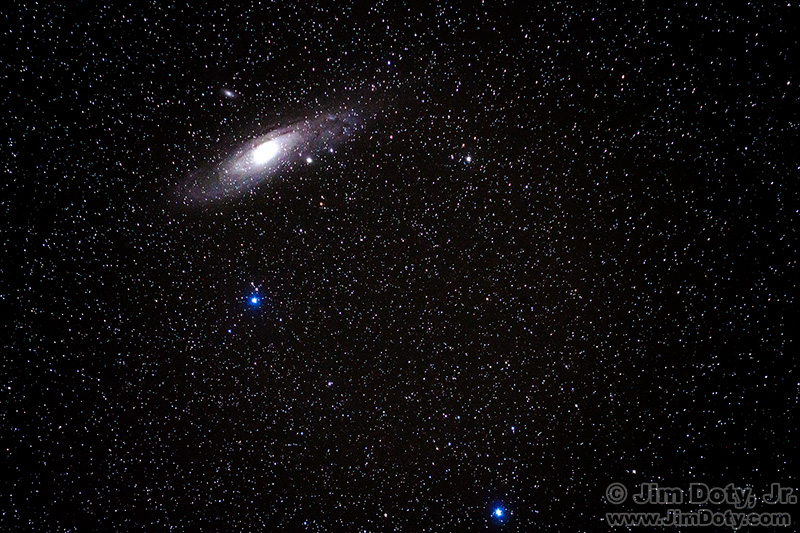
I just purchased the Sky-Watcher Star Adventurer 2i. I read several comparison articles before making my choice. I put it through its paces and decided to write a review with a basic introduction as to how to use it. Not only does it work, it works very well. This photo of the Andromeda Galaxy was taken on my first night out with clear skies.
The Best Panorama Gear: Living in Panorama Heaven
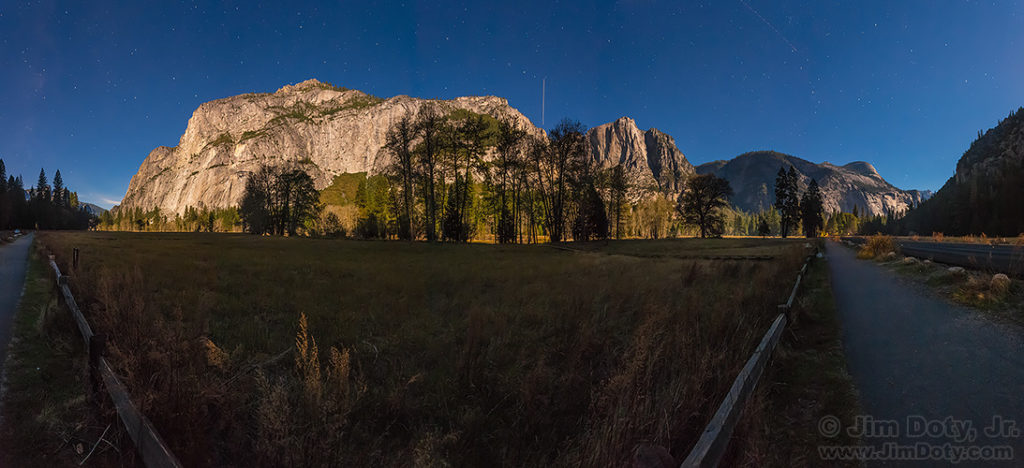
Really Right Stuff makes an excellent, simple to use panorama set up that won’t take up a lot of room in your camera bag. After using bigger, more awkward panorama gear, switching to Really Right Stuff’s set up was like being in panorama heaven. It is compatible with the Arca-Swiss-System.
“How To†Series: Off-Camera Flash
Twelve articles (links below) to get you started with off-camera flash. The equipment you will need and how to use it.
Getting your flash off the camera opens up a whole new world of photographic possibilities. And the really good news: the equipment is way less expensive than it used to be. If you are ready to get started, I just finished writing (or re-writing) a series of articles on off-camera flash that covers the equipment you will need and shows you how to use it.
Beth Presler: Planning for a Fall Water Portrait
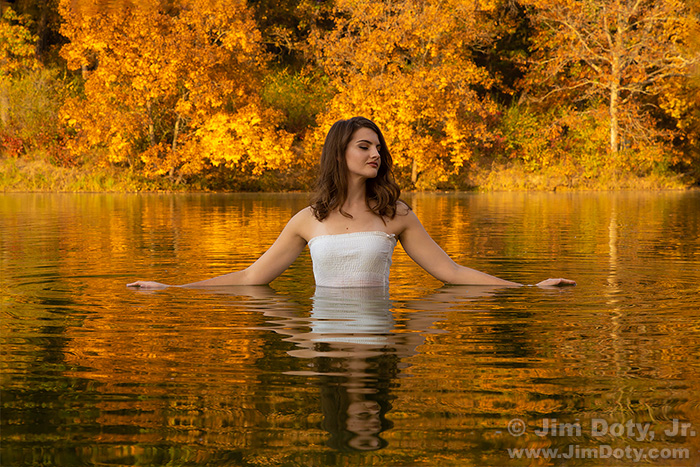
The leaves are turning in southern Iowa so I decided it was time to act on a portrait idea in my head. I pictured a young woman in water with fall leaves in the background reflecting in the water.
Protect Your Camera Gear in the Rain
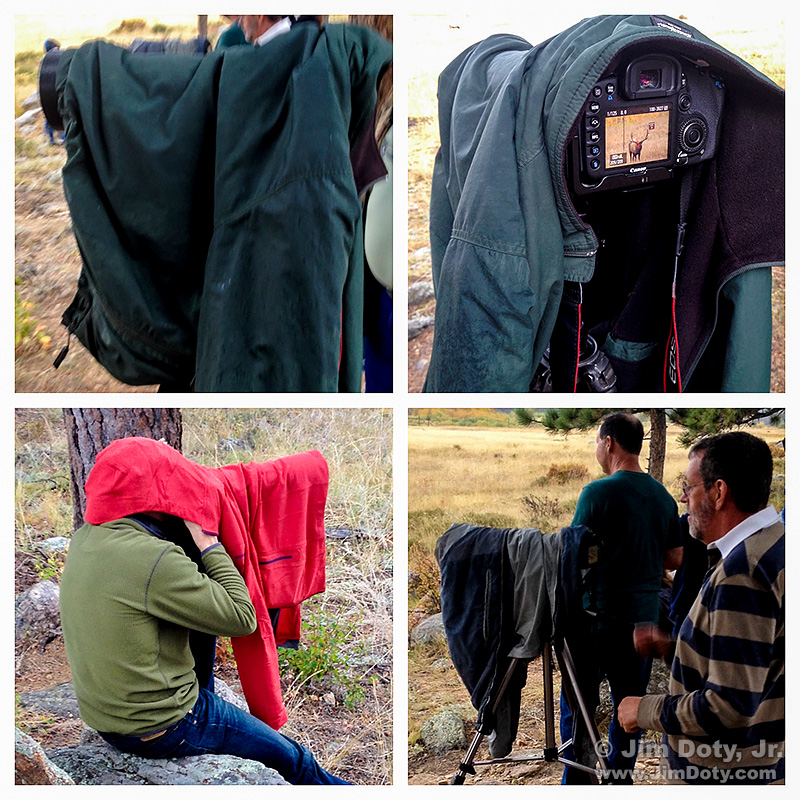
Photographers in a drizzle using coats, jackets, sweaters, hoodies, and anything else to keep their cameras and lenses dry. Rocky Mountain National Park.
Rain is not good for your camera. Some professional level cameras are “weather sealed”. So are some professional level lenses. They even have gaskets for where the lens contacts the camera. But weather sealed is not waterproof. My rule of thumb is weather sealed gear can easily handle a bit of drizzle or a light rain for a short period of time, but it will not handle a light rain for a long period of time, or a heavy downpour. A few drops of rain on weather sealed gear is ok. Much more than that and you need to protect your gear. In this article I provide you with some simple to professional suggestions to protect your gear.
How to Photograph Comet NEOWISE
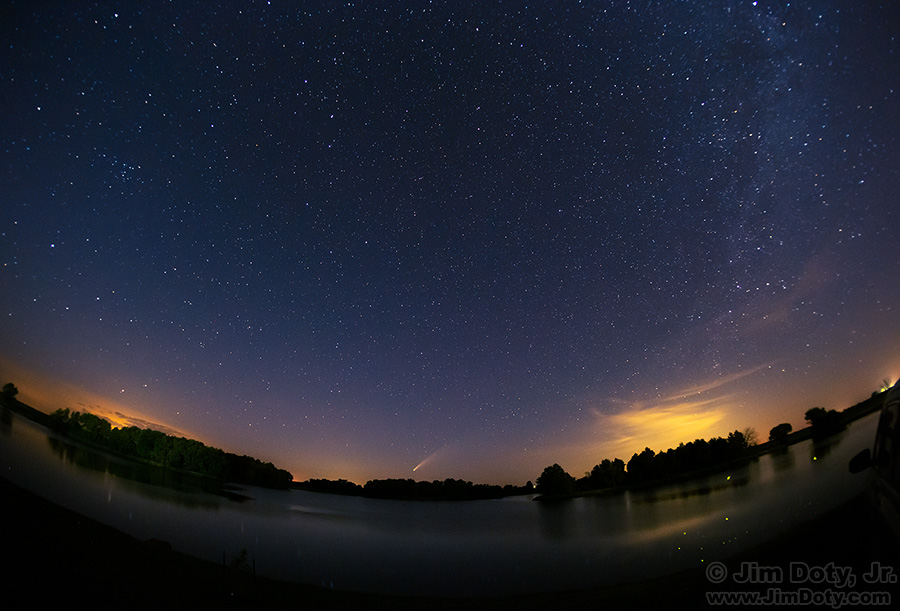
Photographing comets is very much like doing other kinds of night sky photography. The basics are the same. Proper focus, high ISO setting, and long shutter speeds. Plus you need to find your subject in the night sky.
GPS Test: Canon SL3 & Canon GP-E2
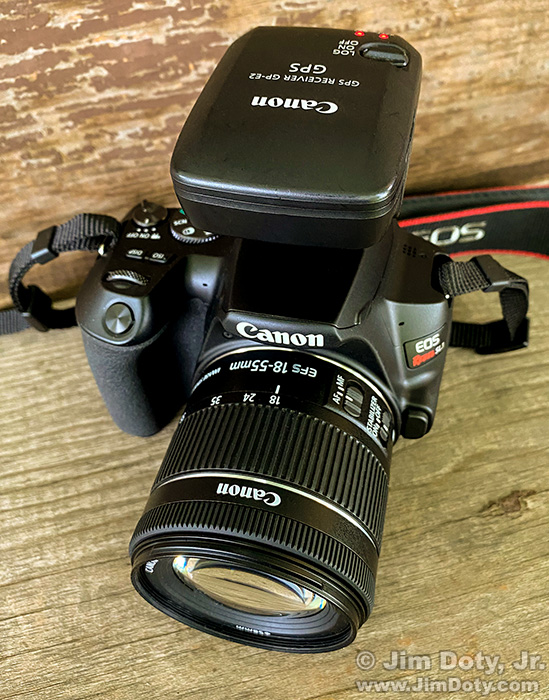
The Canon EOS SL3 is Canon’s smallest and lightest DLSR. It is GPS capable, so I decided to check out how the GPS works. It is a fine little camera and has good reviews. It received a Silver Award at DPReview.
How to See and Photograph The Lyrid Meteor Shower This Week

Perseid Meteor photographed from Rose Hill Cemetery west of Lamoni, Iowa. 4:55 am CDT, August 13, 2018.
This is the best week to see the Lyrid Meteor Shower. The peak is Tuesday night through early Wednesday, April 21-22, but you can see meteors through the 25th. This article will tell you what you need to know to see and photograph this popular spring meteor shower. Best of all, this will be a mostly dark sky week without much interference from the moon.
Using the Histogram to Check Studio Flash Exposures
When using studio flash units, usually the best way to check your exposures is to use an incident light meter which is capable of metering flash exposures. But what if you don’t have an incident flash meter? Or what if you have a subject that absorbs a lot of light? Or a subject that reflects a lot more light than your typical photographic subject? You can double check your exposure settings by using the histogram on your camera. FYI: Do not trust the LCD image on the back of your camera to judge your exposures.
Prairie Chickens at 400 Yards
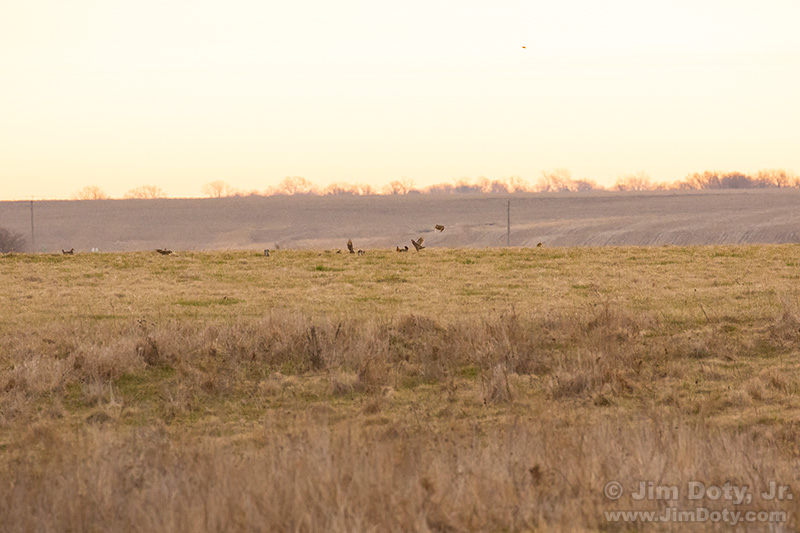
I figured it was pretty much an exercise in futility to try and photograph prairie chickens that were over 400 yards away, but I did it anyway. Why not? You have nothing to lose. If the photos don’t come out, no one needs to see them. Or they might end up being an illustration for a blog article (wink).

